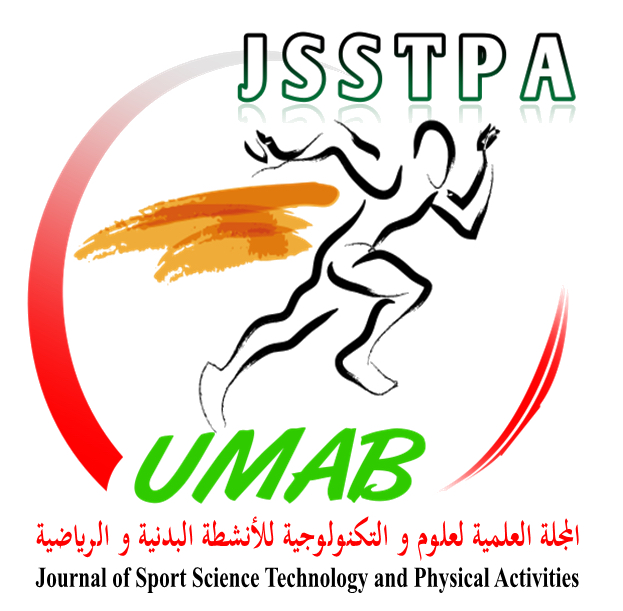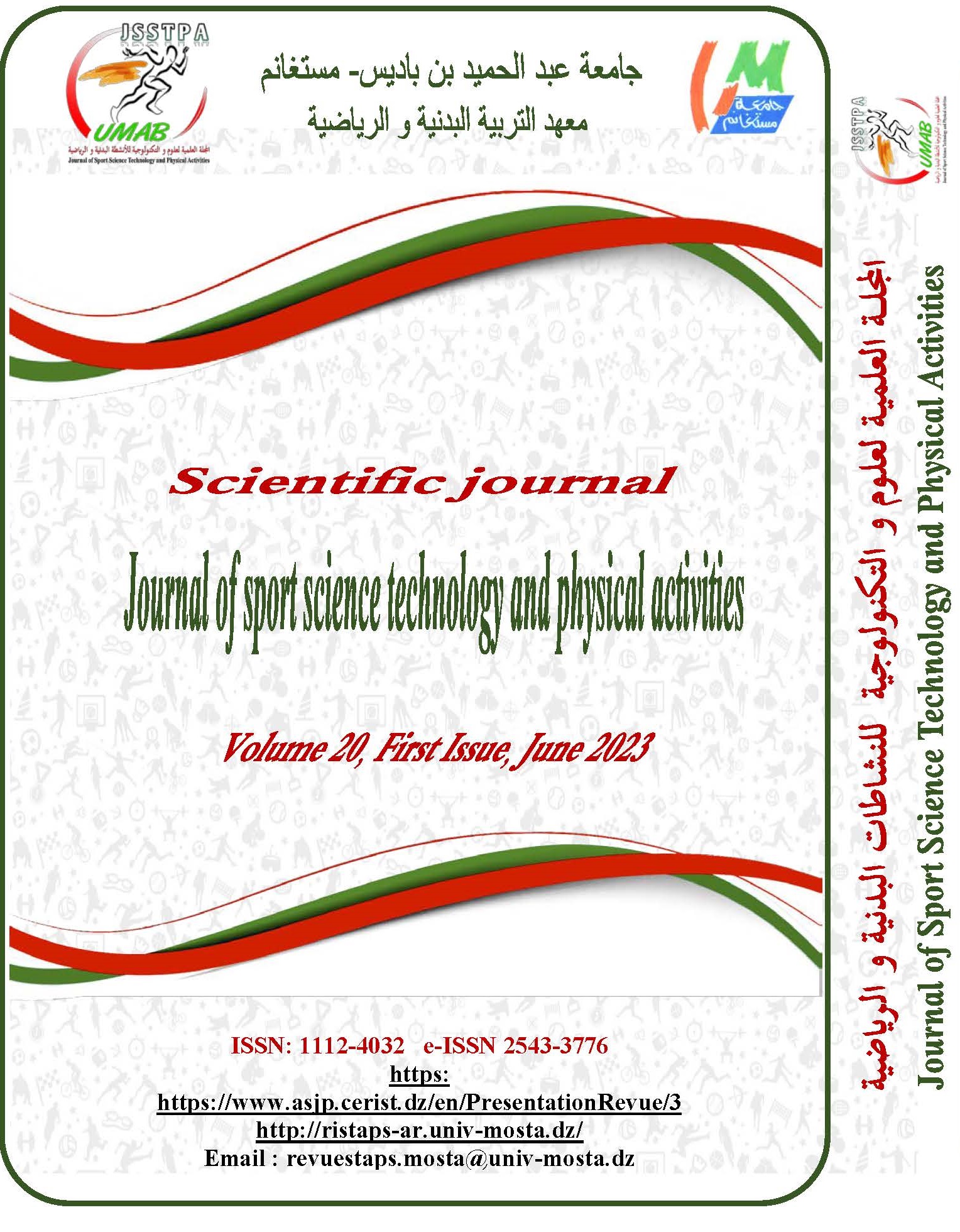ممارسة النشاط الرياضي وأثره على صفة التوازن لدي التلاميذ المتمدرسين
Mots-clés :
deaf-mutes, quality of balance, physical activityRésumé
The study aimed to identify the effect of adapted physical activity on improving balance in deaf-mutes, by identifying statistical differences and determining the correlations in balance measurement between the research sample (deaf- mute) practicing an adapted physical activity and normal people practicing their weekly session. Thirty-seven students participated in this study. Divided into: a deaf-mute group rated "G sm" (n = 18, age =16.22± 1.43, weight = 54.44± 11.56, height =169.55 cm ± 9.94), and a normal group rated "Gn" (n = 19, age = 15.94 ± 1.34, weight = 54.05 ± 7.50, height = 160.21 cm ± 9.62). We also adopted the static balance tests while standing on the toes of vertically and horizontally, in addition to dynamic balance tests adapted from Bass and the jump over marks test. The research results confirm that there are statistically significant differences and direct correlations in the measurement tests for dynamic balance and the static balance test between Gsm and Gn. In agreement with other studies, the present study focuses on encouraging the practice of a sports activity adapted for people with disabilities (deaf-mutes), emphasizing the development of balance Static and dynamic. during growth
Téléchargements
Publiée
Comment citer
Numéro
Rubrique
Licence
© Revue des Sciences et Technologies des Activités Physiques et Sportives 2025

Ce travail est disponible sous licence Creative Commons Attribution - Pas d'Utilisation Commerciale - Pas de Modification 4.0 International.


